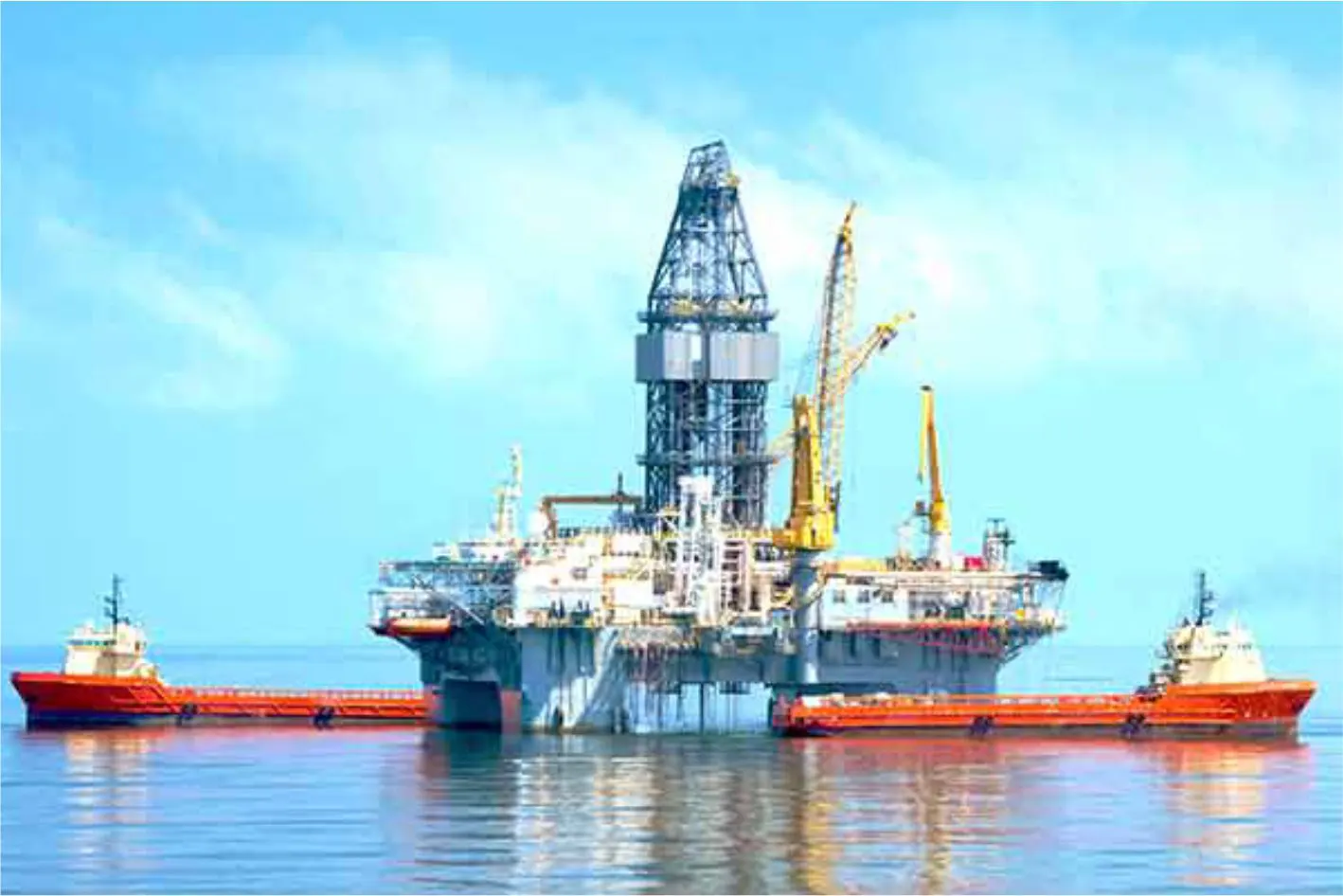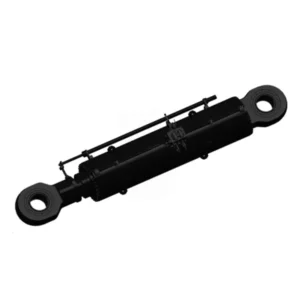Jack-up Offshore Platform Lifting Cylinder
Como um dos fabricantes, fornecedores e exportadores de produtos mecânicos de cilindros hidráulicos, oferecemos cilindros hidráulicos e muitos outros produtos.
Entre em contato conosco para obter detalhes.
Correio eletrônico:sales@hydraulic-cylinders.net
Fabricante, fornecedor e exportador de cilindros hidráulicos.
Jack-up Offshore Platform Lifting Cylinder
The jack-up offshore platform lifting cylinder is a cutting-edge hydraulic system explicitly designed for offshore platforms. It is crucial in elevating and stabilizing media, ensuring safe and efficient operations in challenging offshore environments. With its advanced features and robust construction, this lifting cylinder is the go-to solution for offshore industries worldwide.
The jack-up offshore platform lifting cylinder is a reliable and efficient hydraulic system designed to elevate and stabilize offshore platforms. Its robust construction, high load capacity, and adjustable height capabilities ensure safe and seamless operations in challenging offshore environments. By following the recommended usage methods and implementing regular maintenance practices, operators can maximize the longevity and performance of this essential lifting solution, contributing to the success of offshore projects.
Jack-up Offshore Platform Lifting Cylinder Key Characteristics:
- Robust Construction: The lifting cylinder is built to withstand the harsh conditions of offshore environments. Constructed from high-quality, corrosion-resistant materials, it offers exceptional durability and longevity, minimizing maintenance requirements.
- High Load Capacity: The lifting cylinder boasts an impressive load capacity, allowing it to handle heavy loads with ease. It provides reliable support for the entire platform during elevation, ensuring stability and safety during operations.
- Hydraulic Power: Powered by a hydraulic system, the lifting cylinder utilizes the force generated by pressurized fluids to raise and lower the platform. This hydraulic mechanism offers precise control over the elevation process, ensuring smooth and controlled movements.
- Adjustable Height: The jack-up offshore platform lifting cylinder allows for adjustable platform height, accommodating varying water depths and sea conditions. This adaptability ensures optimal positioning of the platform, enhancing stability and facilitating efficient operations.
Jack-up Offshore Platform Lifting Cylinder Parameter:
| Product Name | Jack-up Offshore Platform Lifting Cylinder |
| Features: | Realize the lifting and lowering of the platform by driving the ring beam |
| Bore diameter: | Up to 700mm |
| Rod diameter: | Up to 420mm Stroke up to 2150mm |
| Pressure: | up to 32Mpa |
| Sensor: | An external displacement sensor can be configured to meet the needs of maintenance and replacement of the sensor without disassembling the cylinders |
| Applications: | Jack-up Offshore Platform |
Rod diameter: up to 420mm
Stroke up to 2150mm
Jack-up Offshore Platform Cylinder Application:

Usage Method Of Jack-up Offshore Platform Lifting Cylinder:
- Pre-Lift Preparation: Before initiating the lifting process, ensure the platform is securely positioned and all safety measures are in place. Conduct a thorough inspection of the lifting cylinder and associated components.
- Hydraulic System Activation: Activate the hydraulic system, ensuring proper pressure levels and fluid supply. This will provide the necessary force for the lifting cylinder to elevate the platform.
- Controlled Elevation: Engage the lifting cylinder, utilizing the hydraulic controls to gradually elevate the platform to the desired height. Monitor the process closely, ensuring smooth and controlled movements.
- Stabilization: Once the desired height is achieved, engage the platform stabilization mechanism, ensuring the platform remains secure and level during operations.
How To Remove Hydraulic Cylinder Pins?
Removing hydraulic cylinder pins requires careful handling and adherence to safety procedures. Here’s a step-by-step guide on how to remove hydraulic cylinder pins:
- Prepare the Work Area: Ensure you have a clean and well-lit workspace. Clear any obstructions around the hydraulic cylinder to allow easy access to the pin removal process.
- Release Pressure: Before attempting to remove the pins, relieve the hydraulic pressure in the system. This step is crucial to prevent sudden movement or unexpected release of stored energy. Follow the manufacturer’s instructions for safely depressurizing the hydraulic system.
- Identify Pin Types: Hydraulic cylinder pins can come in various types, such as clevis pins, cotter pins, or snap rings. Identify the specific type of pin used in your hydraulic cylinder to determine the appropriate removal method.
- Gather Tools: Depending on the pin type, you may need specific tools for removal. Common tools include a hammer, punch, pliers, or a pin removal tool designed for hydraulic cylinders.
- Remove Retaining Hardware: If the pin is secured with retaining hardware, such as cotter pins or snap rings, carefully remove them using the appropriate tools. Take care not to damage the surrounding components.
- Apply Penetrating Oil (If Needed): If the pin seems stuck or resistant to movement, applying a penetrating oil can help loosen any rust or debris. Allow the oil to penetrate for a few minutes to facilitate easier removal.
- Tap the Pin: Using a hammer and a punch or a pin removal tool, gently tap the pin from the opposite side of the retaining hardware. Start with light taps to avoid damage and gradually increase force if necessary. The goal is to dislodge the pin without causing excessive force.
- Wiggle and Pull: Once the pin starts to move, wiggle it back and forth while applying outward pressure to remove it from the hydraulic cylinder. Be patient and avoid using excessive force, as this can lead to damage or injury.
- Inspect the Pin: After removal, inspect the pin for any signs of damage or wear. If the pin is damaged, replace it with a new one before reassembling the hydraulic cylinder.
- Clean and Lubricate: Thoroughly clean the pin and the pinholes in the hydraulic cylinder. Remove any debris, rust, or old lubricant. Apply a suitable lubricant to the pin before reinstallation to ensure smooth operation.
Aptidão e capacidade da fábrica:
(1) Montagem
Temos uma plataforma de montagem de pesquisa e desenvolvimento independente de primeira classe. A oficina de produção de cilindros hidráulicos tem quatro linhas de montagem semiautomáticas de cilindros de elevação e uma linha de montagem automática de cilindros de inclinação, com uma capacidade de produção anual projetada de 1 milhão de peças. A oficina de cilindros especiais é equipada com várias especificações de um sistema de montagem de limpeza semiautomática com uma capacidade de produção anual projetada de 200.000 peças e equipada com famosos equipamentos de usinagem CNC, um centro de usinagem, um equipamento especial de processamento de cilindros de alta precisão, uma máquina de solda robotizada, uma máquina de limpeza automática, uma máquina de montagem automática de cilindros e uma linha de produção de pintura automática. O equipamento crítico existente é de mais de 300 conjuntos (conjuntos). A alocação ideal e o uso eficiente dos recursos do equipamento garantem os requisitos de precisão dos produtos e atendem às necessidades de alta qualidade dos produtos.


(2) Usinagem
A oficina de usinagem é equipada com um centro de torneamento de trilho inclinado personalizado, um centro de usinagem, uma máquina de brunimento de alta velocidade, um robô de soldagem e outros equipamentos relacionados, que podem lidar com o processamento de tubos de cilindros com diâmetro interno máximo de 400 mm e comprimento máximo de 6 metros.

(3) Soldagem

(4) Pintura e revestimento
Com linhas de revestimento de tinta à base de água automáticas de cilindros de pequeno e médio porte, para obter carregamento e descarregamento automáticos de robôs e pulverização automática, a capacidade projetada é de 4.000 peças por turno;
Também temos uma linha de produção de tinta semiautomática para cilindros grandes, acionada por uma corrente elétrica, com capacidade de projeto de 60 caixas por turno.


(5) Testes
Temos instalações de inspeção e bancos de teste de primeira classe para garantir que o desempenho do cilindro atenda aos requisitos.

We are one of the best hydraulic cylinder manufacturers. We can offer comprehensive hydraulic cylinders. We also provide corresponding caixas de câmbio agrícolas. Exportamos nossos produtos para clientes em todo o mundo e conquistamos uma boa reputação devido à qualidade superior de nossos produtos e ao serviço pós-venda. Convidamos clientes nacionais e estrangeiros a entrar em contato conosco para negociar negócios, trocar informações e cooperar conosco!
Faça um tour pela nossa fábrica de RV:
Faça um tour pela nossa fábrica de RV com o seguinte
Cilindro hidráulico Aplicação:



